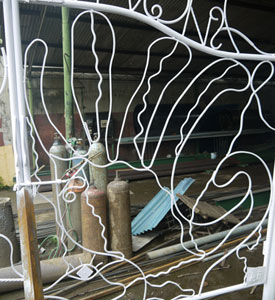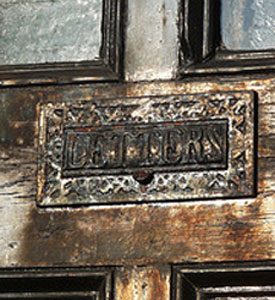As 2011 comes to an end, we are taking a look back at some of our favorite posts of the year by our guest editors.
 Amor de Días—the duo of Alasdair Maclean (Clientele) and Lupe Núñez-Fernández (Pipas)—just released debut album Street Of The Love Of Days via Merge. (Those of you who speak Spanish know that the band’s moniker translates to “love of days,” hence the album title.) Maclean and Núñez-Fernández worked on the 15-track LP for more than three years, and it features guest spots by the likes of Louis Philippe, Damon & Naomi, Gary Olson (Ladybug Transistor) and Danny Manners. Maclean and Núñez-Fernández will also be guest editing magnetmagazine.com all week. Read our brand new Q&A with them.
Amor de Días—the duo of Alasdair Maclean (Clientele) and Lupe Núñez-Fernández (Pipas)—just released debut album Street Of The Love Of Days via Merge. (Those of you who speak Spanish know that the band’s moniker translates to “love of days,” hence the album title.) Maclean and Núñez-Fernández worked on the 15-track LP for more than three years, and it features guest spots by the likes of Louis Philippe, Damon & Naomi, Gary Olson (Ladybug Transistor) and Danny Manners. Maclean and Núñez-Fernández will also be guest editing magnetmagazine.com all week. Read our brand new Q&A with them.

 Maclean: Ida Ekblad is a Norwegian painter and sculptor. According to notes I made in my diary in April, her method is to walk around a city in wide, aimless circles, picking up interesting objects wherever and whenever she finds them: from ruined building sites, parks or landfills. Then she pieces the objects together as sculptures, tying them together or sinking them into plaster of Paris. Together, they form an echo of place, perhaps a kind of secret key to the city she finds herself in.
Maclean: Ida Ekblad is a Norwegian painter and sculptor. According to notes I made in my diary in April, her method is to walk around a city in wide, aimless circles, picking up interesting objects wherever and whenever she finds them: from ruined building sites, parks or landfills. Then she pieces the objects together as sculptures, tying them together or sinking them into plaster of Paris. Together, they form an echo of place, perhaps a kind of secret key to the city she finds herself in.
Julian Hyde is based in Windermere in the Lake District, beauty spot and home of Wordsworth. He also has a faith in walking, looping through the woods and lakes in search of found objects, forgotten things. Julian sometimes extends these walks into cordoned-off areas, getting up before dawn to witness and photograph the derelict and abandoned places that the authorities have marked off limits to you and me. I think to have a genuine sense of place you need to be aware of these kind of spaces on the margins and refuse to be hemmed in by footpaths and fences. He collects his impressions in beautiful books of photos and text, lovingly bound, sometimes mounted in Joseph Cornell-style boxes surrounded by the leaves and ephemera that inspired him. They describe a kind of archaeology of the abandoned. Julian’s books are labours of love and, as such, aren’t produced in large numbers. He has no web presence, except this Flickr page, which he can be contacted through.
Video after the jump.






